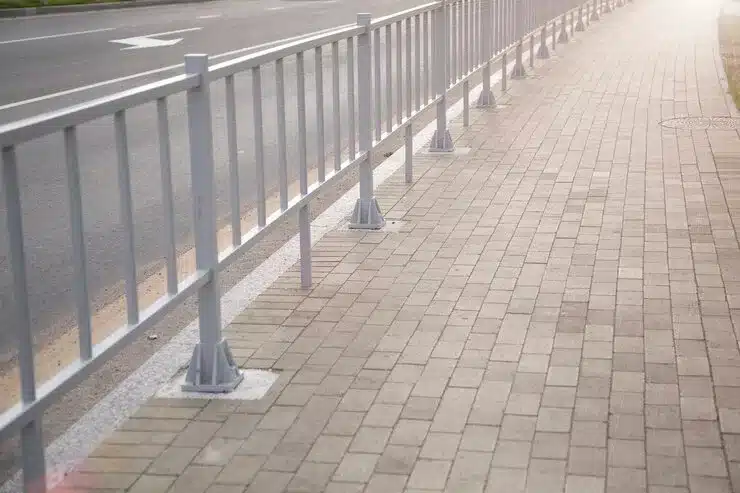
Stamped concrete has become an increasingly popular way for homeowners and businesses to enhance the appearance of exterior surfaces. With a variety of available patterns and textures, stamped concrete offers an affordable way to mimic the look of natural stone, brick, tile, and wood for driveways, patios, pool decks, and more.
This article will explore eight stamped concrete ideas that can transform the aesthetic of both residential and commercial properties. From new installations to resurfacing existing concrete, these stamped concrete applications provide durable and low-maintenance solutions to beautify outdoor spaces.
With the right contractor, even novice DIYers can achieve stunning results. Read on to discover how stamped concrete can upgrade the curb appeal and style of your home or business.
8 Stamped Concrete Ideas
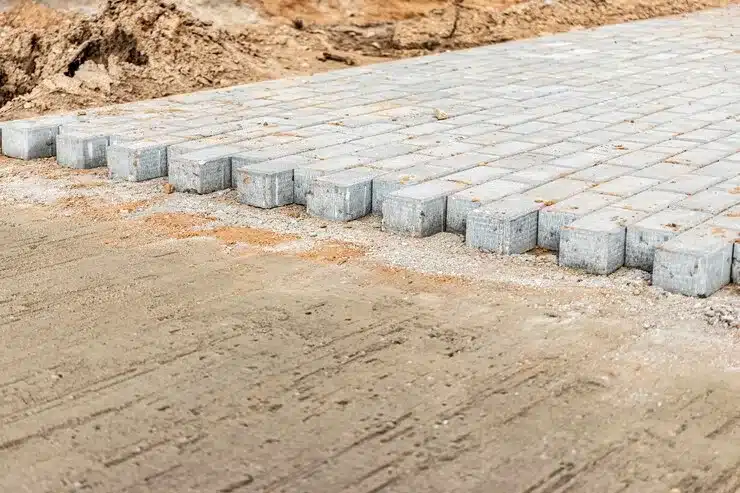
Stamped concrete is a versatile and popular choice for outdoor spaces due to its durability and the wide range of patterns and colors available. It can mimic the look of more expensive materials like stone, brick, or wood at a fraction of the cost. Here are eight stamped concrete ideas to inspire your next outdoor project:
1. Stone Pattern for Patios
Choose a natural stone pattern for your patio to create an elegant outdoor living space. Opt for colors that complement your home’s exterior and landscaping for a cohesive look.
2. Brick-Look Walkways
Use a brick-patterned stamp for your walkways to give them a classic and timeless feel. You can choose from various colors and shapes to match your home’s style.
3. Wood Plank for Pool Decks
Mimic the look of wood planks for your pool deck to add warmth and a natural feel to your pool area. This can be particularly striking when contrasted with the water and surrounding landscape.
4. Slate Tile in Outdoor Kitchens
A slate tile pattern can add sophistication to an outdoor kitchen area. The texture and color variations can hide stains and wear, making it ideal for high-traffic areas.
5. Cobblestone for Driveways
Give your driveway an old-world charm with a cobblestone pattern. This can enhance the curb appeal of your home and make a striking first impression.
6. Herringbone Pattern for Entryways
A herringbone pattern can add interest and dimension to your home’s entryway. This pattern works well with both traditional and contemporary home designs.
7. Seamless Texture for Modern Looks
For a more modern look, choose a seamless texture stamp. These can create a subtle texture that adds interest without overwhelming the space. It’s perfect for complementing minimalist or contemporary homes.
8. Custom Creations with Borders and Accents
Customize your stamped concrete by adding borders, medallions, or other accents. This can help define areas, add personal touches, and create a unique space.
When choosing stamped concrete, consider the overall style of your home and outdoor space, as well as maintenance and durability. Stamped concrete is low maintenance, but it may require resealing every few years to maintain its color and texture. With these ideas, you can create beautiful, functional outdoor spaces that last for years.
Stamped Concrete Driveways, Walkways and Patios
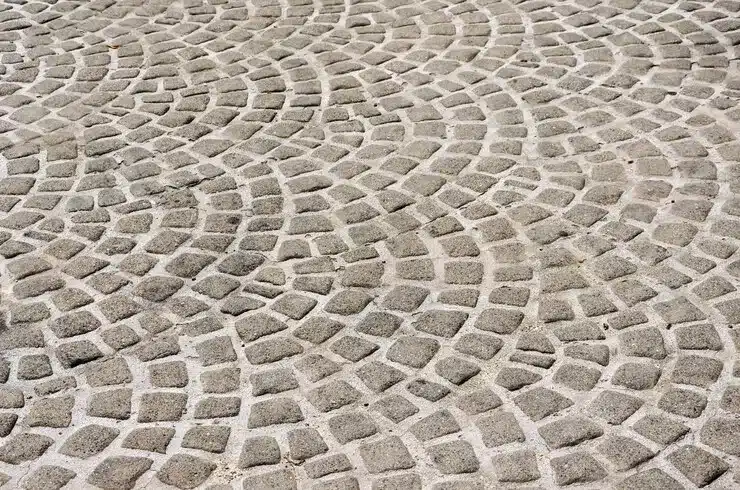
Stamped concrete is an attractive option for driveways, walkways, and patios. Concrete stamping involves imprinting patterns and textures into freshly poured concrete to mimic other building materials like stone, brick, slate, and tile.
Driveways
Stamped concrete driveways are durable and low-maintenance. Concrete stamping can create the look of cobblestone, brick or stone for a fraction of the cost. Stamped concrete driveways typically last up to 30 years and are resistant to weathering. Homeowners can choose from a variety of patterns, colors and textures to complement their home’s architecture and landscaping.
Walkways
Stamped concrete walkways increase curb appeal while providing a safe passageway for pedestrians. Stamped concrete can replicate the appearance of flagstone, slate or brick. Color hardeners and release agents produce vibrant colors and clear imprints. Stamped concrete walkways require little maintenance and typically last 20-30 years.
Patios
Stamped concrete patios transform outdoor spaces into inviting entertainment areas. Homeowners can select patterns like slate, stone, brick, or tile and embed them into the concrete for an authentic look. Release agents and color hardeners produce rich colors that hold up to weathering. Stamped concrete patios are low-maintenance, long-lasting, and the perfect place for outdoor furniture, grills, fire pits, and more.
In summary, stamped concrete driveways, walkways, and patios offer an attractive and affordable alternative to natural stone and other materials. With proper installation and maintenance, stamped concrete can provide decades of service while enhancing the appearance and functionality of outdoor spaces. Homeowners seeking to revitalize their property and increase its value should consider the many benefits of stamped concrete.
Steps for Stamped Concrete Application
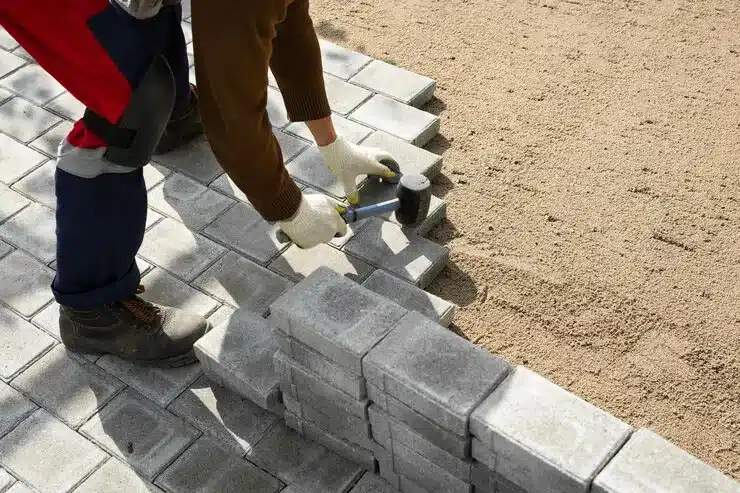
Stamped concrete is a popular choice for patios, driveways, and walkways because it combines the durability of concrete with the aesthetic appeal of brick, stone, or wood patterns. The process of making and applying stamped concrete involves several steps to achieve its distinctive appearance:
- Preparation of the Base: The first step is to prepare the ground where the stamped concrete will be placed. This involves excavating the area to the required depth and then compacting the soil beneath to prevent settling. A base material of gravel or crushed stone is then added and compacted to create a stable base.
- Forming: Borders or frames are set up to define the area where the concrete will be poured. These forms are typically made of wood or metal and are placed to ensure the concrete is contained in the desired shape and thickness.
- Mixing Concrete: Concrete is mixed using cement, aggregates (like sand and gravel), and water. Sometimes, color is added to the mix to achieve the desired hue. This can be done by adding integral color to the entire concrete mix before it’s poured or by applying a color hardener to the surface of the concrete after it’s been poured but before it’s stamped.
- Pouring Concrete: The mixed concrete is poured into the prepared forms. It’s important to pour the concrete evenly to ensure consistent thickness and to avoid any voids or air pockets.
- Coloring (if not already mixed in): If a surface color or a color hardener is being used, it’s applied to the surface of the freshly poured concrete. This not only colors the concrete but also adds a hardening effect to the surface, increasing its durability.
- Adding Release Agent: A release agent is applied to the concrete surface. This substance prevents the concrete stamps from sticking to the concrete when they’re applied. It also adds a secondary color to the concrete, enhancing the look of the stamped pattern.
- Stamping: Once the concrete reaches the correct set or slightly hardened state (not too wet but not fully hardened), large stamps are applied to the surface. These stamps are pressed into the concrete to create the desired pattern. The stamps are typically made of polyurethane and mimic the texture and patterns of natural stone, brick, wood, or other textures. Workers move the stamps across the surface, pressing them into the concrete to leave an imprint.
- Detailing and Touch-ups: After the main stamping is complete, any necessary touch-ups are made using hand tools. This can include fixing edges, adding additional texture, or working on areas that the larger stamps couldn’t properly imprint.
- Curing: The concrete is left to cure for several days. Curing is crucial for the concrete to achieve its maximum strength and durability. During this time, it may be necessary to keep the concrete moist to ensure proper curing.
- Sealing: After the concrete has cured, a sealant is applied to the surface. The sealant protects the concrete from moisture, stains, and wear. It also enhances the color and gives the surface a glossy or matte finish, depending on the desired look.
The result is a durable and attractive surface that can mimic various materials, offering a versatile and cost-effective alternative to natural stone, bricks, or wood decking.
FAQs About Stamped Concrete Installation
The process of stamped concrete installation involves several steps. First, a concrete slab is poured and allowed to partially harden. Next, colorants and release agents are applied to the concrete surface. Finally, stamping tools that have textured patterns are pressed into the concrete to create the desired aesthetic design. The surface is then sealed to protect the pattern and color.
The installation of a typical stamped concrete patio, walkway, or driveway usually takes 2 to 3 days to complete depending on the size and complexity of the design. The pouring and stamping of the concrete itself only takes a few hours. However, additional time is required for the concrete to be partially set before stamping and then fully cured before sealing the surface. Weather conditions also affect the timing, as concrete cannot be poured in rain or extreme heat.
The cost of stamped concrete depends on the size of the area, the complexity of the pattern, and local rates. On average, stamped concrete costs between $8 to $20 per square foot. A standard project like a patio, walkway, or driveway can range from $10,000 to $30,000 or more for larger commercial projects. Stamped concrete provides a cost-effective alternative to natural stone, brick, or tile.
Stamped concrete requires some maintenance to keep its appearance. Apply a sealant every 2-3 years, especially for high-traffic areas like driveways. For unsealed surfaces, use a concrete cleaner and protectant.
Power wash the surface annually to remove dirt and stains. Re-sealing may be required more often if the surface shows signs of wear or water is no longer beading up. Avoid using harsh chemicals, abrasive cleaners, and de-icers which can damage the pattern and finish.
Conclusion
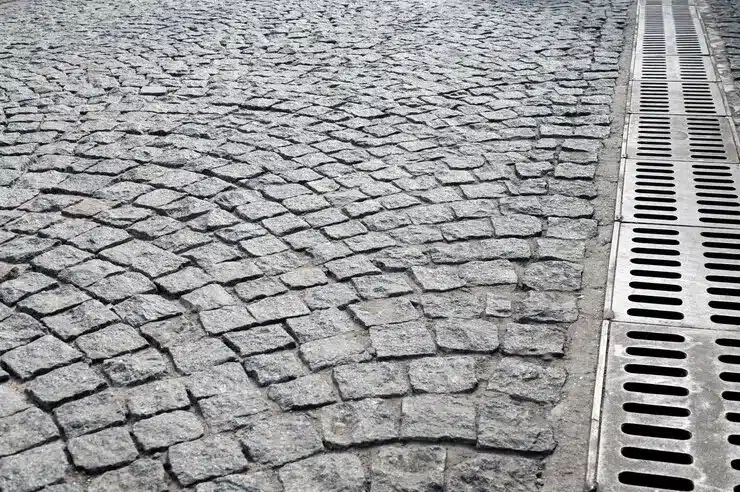
Stamped concrete has risen in popularity for its versatility, durability, and aesthetic appeal. With creative patterns, textures, and colors, stamped concrete can transform driveways, patios, pool decks, and more into stunning focal points. Whether desiring an elegant, antique look or a natural stone appearance, stamped concrete provides a customized solution. Though installation requires expertise, the long-lasting results are well worth the investment.
For those seeking to enhance their home’s curb appeal and value with a material that withstands weathering and wear, stamped concrete ideas deliver inspiring, on-trend options. With thoughtful planning and preparation, stamped concrete can turn ordinary hardscape into a unique, decorative statement.
At Rhino Concrete Bay Area, we understand the transformative power of stamped concrete. Our team is dedicated to helping you bring these ideas to life, ensuring a blend of beauty, durability, and functionality in your home. Whether you’re looking to revamp your driveway, patio, or any part of your property, we have the expertise and creativity to achieve your vision.
Visit our website to explore more tips and ideas on how to transform your home with stamped concrete. For a personalized consultation and quote, don’t hesitate to call us. Let us help you make your home improvement dreams a reality.







